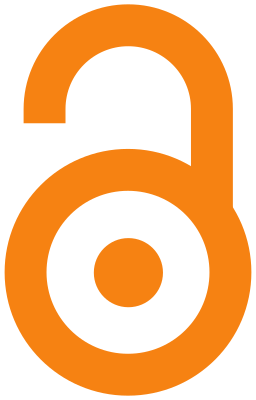Dr. A. (Annemarie) Zand Scholten
- Roetersstraat 11
- Kamernummer: B 7.07
-
Postbus 15961
1001 NL Amsterdam
-
Profile
Bio
I am director of the College of Social Sciences at the Faculty of Social and Behavioural Sciences. My interests include management and insitutional research in higher education. My background is in psychometrics and research methods.
In previous roles, between 2004 and 2021, I ...
- managed the Teaching and Learning Centre at Economics and Business;
- was director of the Centre for Educational Innovation at Economics & Business;
- coordinated Blended Learning efforts at FMG;
- created five MOOCs on methods and statistics (taught three, produced five) for Child Development & Educational Sciences, Social Sciences and FMG;
- was programme director of the shared premaster Political Sciences, Social Sciences, Child Development & Educational Sciences, embedded in 7 HvA programmes, at Child Development & Educational Sciences, FMG;
- was programme director of the Bachelor Child Development at Child Development & Educational Sciences, FMG;
- taught methods and statistics as an assistant professor at Child Development & Educational Sciences, FMG;
- obtained my Phd (Admissible statistics from a latent variable perspective) at Psychological Methods, FMG;
- redesigned the Psychological methods specialisation programme (still in use today);
- taught a programming course (CSI: Amsterdam - Creating surveys on the internet with PHP/MySQL) for several years at Psychology, FMG.
Research
My research used to focus on quantitative measurement in psychology. In recent years my interests have shifted to experimental research on the effectiveness of educational interventions.
Teaching
Courses I taught include Methods and Statistics in Educational Research in the research master Child Development and Education - a small advanced course for around 15 students, 'Toegepaste Methodenleer en Statistiek' - a large introductory statistics course for around three hundred students, and the 'OnderzoeksPracticum' - a research project course I coordinated with 80 students and 20 supervisors. The MOOCs Quantitative Research Methods and Inferential Statistics are based on the undergraduate courses I taught on research methods and inferential statistics.
Service
I currently serve on the following boards:
- Universitaire Commissie Onderwijs (UvA)
- Taalbeleid (as chair, UvA)
- Digitale LeerOmgeving-board (UvA)
- FMG financiele commissie (FMG)
- Doorontwikkeling RoetersEilandCampus (FMG)
Previously, I served on others committees and boards, including the WIB/TAO working group, Kerngroep Onderwijs (Covid-19 crisis team), Blended Learning and later the Centre for Learning and Teaching board. Other professional activities include conference organization and website work for the Society for Mathematical Psychology, and helping to set up the Women of MathPsych workgroup. I chaired UvAPro, the PhD student association of the UvA.
-
Courses
Toetsende Statistiek
Course description (Dutch only):
In de cursus Toetsende Statistiek, de vierde cursus in het M&T programma, worden basistechnieken uit de inferentiële, of toetsende statistiek behandeld. We beginnen met de basisbegrippen waaronder statistische hypothesen, toetsingsgrootheidverdelingen, overschrijdingskansen, power en type I en II fouten. Naast deze algemene begrippen komen een groot aantal specifieke statistische toetsen aan bod, waaronder z-toetsen voor 1 en 2 proporties, McNemars toets voor afhankelijke proporties, t-toetsen voor 1 gemiddelde (van gepaarde verschillen) en 2 gemiddelden, de Chi-kwadraat toets voor onafhankelijkheid, Fisher’s exacte toets, enkelvoudig regressie (lineair, exponentieel en logistisch) en multipele regressie, eenweg- en meerweg-variantie-analyse (between subjects) en de non-parametrische toetsen van Wilcoxon, Kruskal-Wallis en de tekentoets en rangtekentoets. Het toepassen van deze technieken met behulp van statistische software (SPSS) wordt geoefend in speciale practica.
Het verwerken van academische literatuur wordt geoefend door middel van schrijfopdrachten die worden besproken in werkgroepverband. Het begrijpen en interpreteren van onderzoeksliteratuur zal worden geoefend via het schrijven van samenvattingen en korte papers. Het zelf rapporteren van nieuwe onderzoeksresultaten zal worden geoefend middels het schrijven van een resultaten- en discussie-sectie van een onderzoeksverslag.
Methods and Statistics in Educational Research (MSinER)
Course description:
Goals
Knowledge of (a) the most commonly used statistical (GLM) techniques in educational research; (b) how to apply these techniques to real data sets with the computer program SPSS; (c) how to report statistical analyses and the results in academic journals; (d) how to read, understand, and interpret academic journal articles in which the techniques are used.
The course starts with a short review of common experimental and quasi-experimental research designs, and associated types of analysis of variance (ANOVA). The general linear model is introduced as the general model that subsumes both ANOVA and regression analysis. Multiple regression analysis and MANOVA are treated extensively. Next, the generalised linear model is introduced as the even more general model that also subsumes logistic regression analysis and log linear modelling, which techniques are also treated extensively. Effect size indices and statistical power will be discussed for all mentioned statistical techniques. Through practical assignments, students not only learn how to apply the statistical techniques, but also how to prepare and screen data, and how to handle commonly encountered problems such as missing values, outliers, non-normality, heteroscedasticy, multicollineraty, inflated family-wise error rates, etc. Articles from educational research journals are used to illustrate how the statistical techniques are applied and described in the scientific literature, and how the results can be reported and interpreted.
Creating Surveys on the Internet (CSI: Amsterdam)
Course description no longer available. Students learned how to create a webapplication that allows the administration of a psychological test or survey online.
During the course students mastered:
- HTML - Markup language : How to present a webpage on the internet.
- CSS - Style rules : How to layout a webpage.
- PHP - Programming language : How to create a dynamic webpage.
- MySQL - Database system : How to store and retrieve data that is input or output for a webpage.
This course is no longer offered.
Grondslagen van de Methodologie (Foundations of Methodology)
I coordinated this course and taught the section on measurement. Here we considered what constitutes measurement, discussed several theories of measurement and the restrictions that measurement assumptions put on the use of statistical tests.
-
Publicaties
2021
 Pope, F., van Baalen, P., Zand Scholten, A., & van Dissel, H. (2021). Bindend studieadvies zorgt voor betere prestaties en minder studievertraging. Economisch-Statistische Berichten, 106(4798), 286-287. https://esb.nu/bindend-studieadvies-zorgt-voor-betere-prestaties-en-minder-studievertraging/ [details]
Pope, F., van Baalen, P., Zand Scholten, A., & van Dissel, H. (2021). Bindend studieadvies zorgt voor betere prestaties en minder studievertraging. Economisch-Statistische Berichten, 106(4798), 286-287. https://esb.nu/bindend-studieadvies-zorgt-voor-betere-prestaties-en-minder-studievertraging/ [details]
2012
- Zand Scholten, A. (2012). The Consensus Definition Redefined From a Representational Perspective. Measurement, 10(1-2), 104-109. https://doi.org/10.1080/15366367.2012.681978 [details]
2011
- Verkuilen, J., Kievit, R. A., & Zand Scholten, A. (2011). Representing concepts by fuzzy sets. In R. Belohlavek, & G. J. Klir (Eds.), Concepts and fuzzy logic (pp. 149-176). MIT Press. http://cognet.mit.edu/library/books/mitpress/0262016478/cache/chap6.pdf [details]
- Zand Scholten, A., Maris, G., & Borsboom, D. (2011). The emperor’s new measurement model. Measurement, 9(1), 32-35. https://doi.org/10.1080/15366367.2011.558785 [details]
2010
- Wicherts, J. M., & Zand Scholten, A. (2010). Test anxiety and the validity of cognitive tests: A confirmatory factor analysis perspective and some empirical findings. Intelligence, 38(1), 169-178. https://doi.org/10.1016/j.intell.2009.09.008 [details]
2009
- Zand Scholten, A., & Borsboom, D. (2009). A reanalysis of Lord's statistical treatment of football numbers. Journal of Mathematical Psychology, 53(2), 69-75. https://doi.org/10.1016/j.jmp.2009.01.002 [details]
2008
- Borsboom, D., & Zand Scholten, A. (2008). The Rasch model and conjoint measurement theory from the perspective of psychometrics. Theory and Psychology, 18(1), 111-117. https://doi.org/10.1177/0959354307086925 [details]
2015
2013
- Jak, S., Zand Scholten, A., & Oort, F. J. (2013). Preface : Non-standard structural equation modelling (Part 2). Netherlands Journal of Psychology, 67(4), 104-105. http://www.psynip.nl/ledennet-documenten-nip-algemeen/njp/njp-openbaar/njop_vol67_nr4-def_cor.pdf [details]
- Wicherts, J. M., & Zand Scholten, A. (2013). Comment on “Poverty Impedes Cognitive Function”. Science, 342(6163), 1169. https://doi.org/10.1126/science.1246680 [details]
2012
- Jak, S., Zand Scholten, A., & Oort, F. J. (2012). Preface: Non-standard structural equation modelling. Netherlands Journal of Psychology, 67(3), 46-47. http://www.psynip.nl/ledennet-documenten-nip-algemeen/njp/njp-openbaar/njop_vol67_nr3-def.pdf [details]
2009
- Borsboom, D., Cramer, A. O. J., Kievit, R. A., Zand Scholten, A., & Franic, S. (2009). The end of construct validity. In R. W. Lissitz (Ed.), The concept of validity (pp. 135-170). Information Age Publ. Inc.. [details]
2014
- Zand Scholten, A., & van Hees, J. (2014). ‘Jullie hoorcollege is voortaan online!’ Ervaringen van de UvA met het vervangen van de hoorcolleges door een MOOC. SURF Thema-uitgave Open en Online Onderwijs, 15-17. https://www.surf.nl/binaries/content/assets/surf/nl/kennisbank/2014/thema-uitgave-kansen-voor-campusonderwijs.pdf
Tijdschriftredactie
- Jak, S. (editor), Zand Scholten, A. (editor) & Oort, F. J. (editor) (2013). Netherlands Journal of Psychology (Journal).
- Zand Scholten, A. (editor) (2011). Netherlands Journal of Psychology (Journal).
This list of publications is extracted from the UvA-Current Research Information System. Questions? Ask the library or the Pure staff of your faculty / institute. Log in to Pure to edit your publications. Log in to Personal Page Publication Selection tool to manage the visibility of your publications on this list. -
Nevenwerkzaamheden
- Geen nevenwerkzaamheden
